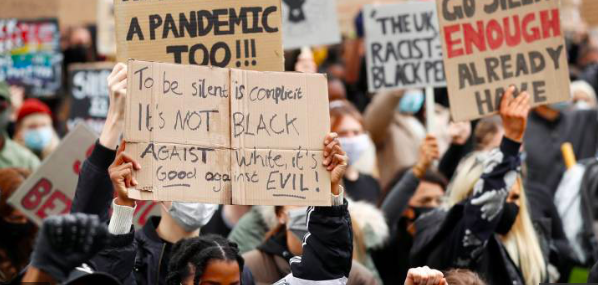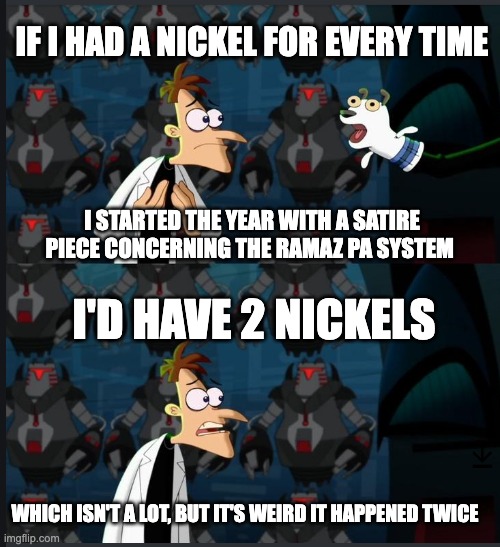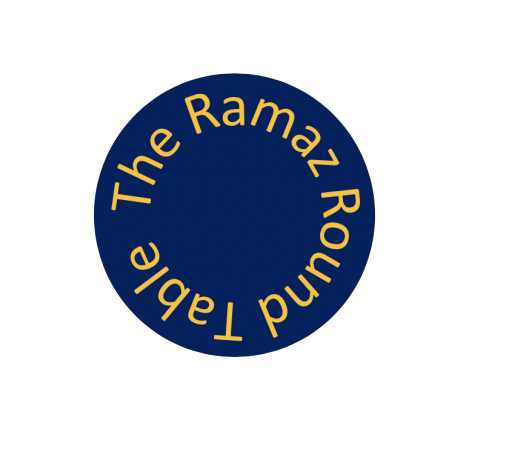Ramaz’s Response to Racial Injustice and the George Floyd Protests: A Student’s Perspective

As 2020 progresses, feelings of chaos and unrest become increasingly prevalent. The most recent occurrence that has added to the hysteria has been the tragic murder of George Floyd and the protests that have taken place since then. The country, and on a wider scale, the world, have responded in different ways to the protests, riots, and looting that have taken place. The same can be said for our school and community.
On June 1, five days after the death of George Floyd, Mr. Cannon sent out an email titled “Ramaz Stands Against Racial Injustice.” In that email, Mr. Cannon specified that the Ramaz family does not condone any support of the white supremacist movement and believes that as a community, we should call for change. However, he says, we cannot “support those who incite and commit violence and destruction. Such behavior endangers other people’s lives and property, and it serves no purpose other than to allow some to justify inaction against the underlying issues because of the behavior of the few.” Along with that, he said that the Ramaz community stands in support of the police and that the majority of policemen are dedicated to keeping us safe. However, here is where the line begins to get blurry. What are the rules of engagement in a protest? What qualifies one protest as peaceful, and another as violent? Moreover, what if there were peaceful protesters who were antagonized by the very police who are supposed to protect their right to assemble? Do we, as a community, support their use of force?
One of these situations occurred on June 1 when President Trump ordered police to clear protesters in Lafayette Square from the premises. Though President Trump’s intentions were not initially apparent, it was later discovered that the protesters were being ordered to leave because the President wanted a photo-op in the Square. When the protesters did not leave since the protest was before curfew in a public place, chemical agents were used on the crowd. This was a group of “peaceful” protesters who were turned on violently by the police under the direct order of the president. The chemical agents were not used to stop looters, but to clear a path so the president could take photos holding a Bible. Where does this fit in the cases outlined in Mr. Cannon’s email? This is just one example of a situation where the answer is not readily apparent.
After Mr. Cannon’s email was sent out, an assembly was held on Wednesday, June 3 to continue speaking about the protests and what we as Ramaz students can do. Rabbi Stochel began by saying that we should adopt a stance of humility when judging others and that the focus in the assembly would not be on the violence or the looting because they are a distraction from the real problem. When learning about racism in school, the lesson is taught in the past tense. Students leave the class thankful that the civil rights movement occurred and that racism isn’t an issue today. We are taught that protests like those in the civil rights movements do not usually occur anymore, with activists and allies standing together all over the world. The general theme for most of the assembly appeared to be that as students, we should be thinking about our duty and what we could be doing to help. However, towards the end of the assembly, there was a “Zoom bomber” who came into the assembly and began to hurl curse words and racial slurs. The invader was kicked out of the meeting, but the general feeling of calm had been greatly disturbed. The student body was exposed first hand to the deeply rooted hatred. Ms. Krupka posted on Schoology later that night, providing students with resources to help them educate themselves and said that we as Ramaz students can do anything and should continue holding conversations of empathy and understanding.
Additionally, students from Ramaz and across the country and world have been responding to racial injustice and the protests on social media. Whether it’s by posting a black screen for #blackouttuesday or by providing links to petitions, many teens have taken a stand to participate in the protests from home.
All in all, it is my opinion that we have to be careful when speaking about the protests because not every protest falls under a clear category of peaceful or not peaceful. Furthermore, while I stand by posting on social media in support of the Black Lives Matter movement and have done it myself, I believe that we need to remember that our work doesn’t end there. Black Lives Matter is not just another trend to follow. It is a real movement that is impacting lives, and we need to use our voices to speak up for those who cannot.



